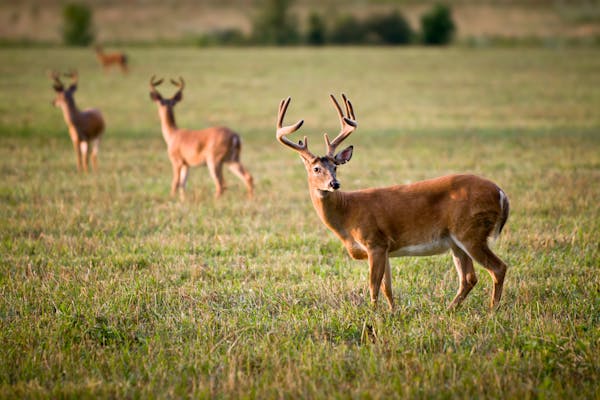It's always a thrill for me to spot a whitetail deer or two while I am walking the edge of a forest or within it.
They are not as large as most people think. The back of an adult deer is seldom more than waist-high to the average person. Typical weights in the autumn are 170 pounds for bucks and 145 for does.
Back in September, the bucks started to rub their antlers against young saplings, removing the velvet from the antlers and leaving scars on the tree trunks. They continue to rub long after the velvet is gone, no doubt to mark the edges of mating territories with a scent from a specialized gland on their foreheads.
By the middle of October — this time of year — deer have begun their mating season in earnest, and the scrapes and rubs of rutting males can be spotted in the woods. A buck may scrape an area of ground less than a square yard with its hooves, marking the scrape with urine and scent from glands located on its hind legs. The scrape is a sign to other males that the territory is occupied and, to females, that an interested buck is nearby.
Here are some other observations of late:
- Minnesota farmers continue to harvest soybeans, corn, sunflowers, sugarbeets, and potatoes.
- Apple growers pick Keepsake, Regent, Fireside and other late-season varieties. Fall garden raspberry picking still is good.
- Eastern cottonwood trees, quaking aspens and paper birches display golden-yellow foliage; silver maples and wild grapevines have sunny yellow leaves; and many sugar maples radiate burnt-orange, reds and golden-yellows. Boston ivy vines, growing on the sides of schools and other buildings, show colorful red foliage.
- The migration of common loons, which began in late August, reaches its peak in mid-October and continues into December. A few of the other migrating birds include both golden-crowned and ruby-crowned kinglets, white-throated sparrows and dark-eyed juncos, yellow-rumped warblers, and some waterfowl. Beavers are busy cutting trees to store for winter food. They binge on bark from aspens, alders, birches, maples and willows, plus other vegetation.
Jim Gilbert has taught and worked as a naturalist for more than 50 years.
Defending champion Golden Knights beat Stars 3-1 to take 2-0 series lead home to Vegas
Anze Kopitar scores in overtime, Kings beat Oilers 5-4 in Game 2 to tie series

